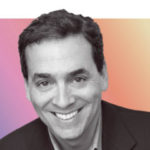”A singular and forward-thinking focus on workforce learning and emerging technologies has shaped his 40-year, multi-role career — futurist, analyst, editor of LearningTRENDS, an e-newsletter read by more than 52,000 business executives around the world, and creator and host of an acclaimed annual conference on learning, simply called Learning, which last year attracted more than 2,000 participants. “What drives my interest,” he told Convene, “is the understanding that learning is different than teaching. Learning is about the individual.”
His programs, courses, and speeches, which have reached more than 1.7 million individuals around the world, have been guided by the same imperatives as TED events: Be interested. Be generous. Be interesting. Connect. I connected with Masie recently – several months after I had participated in and presented at Learning2011, held Nov. 6–9 in Orlando—to see what experience has taught him about the role that meetings play in adult education.
What is new about the way people learn at conferences and meetings?
Our role as meeting planners, exhibit managers, and conference coordinators has been not to structure teaching, but to structure the environment, the meetings architecture and expectations that allow individuals to maximize their own learning. Nothing significant has changed over 40 years.
Learners are curious and have confidence that they can get learning and expertise efficiently and that they have places to go [to get that]. Learners will drive their own learning if we as designers make that happen. There is a role for us to become better designers of events that will facilitate learning.
We are increasingly seeing cognitive science kick in as a discipline to unlock the world of learning. We are also looking at how we layer knowledge and access to expertise in order to optimize learning. The dilemma is that most of what we do about learning is about event management in the association and conference world. In spite of all the technology that has come forth, we actually are presenting things like we did 10, 20 years ago.
I am not sure that we have a culture to radically evolve how we learn with the exception of what individuals are doing over the Internet, social media. But even in those areas, people say, let’s go to an online community or let’s go online and do a search, but there is really a design-capability need.
It’s the next rounds of expertise that hopefully will see us using different disciplines and becoming creative designers, leaders capable of viewing a very different set of meeting, social, content, or collaboration elements to create real change. For example, who would have ever thought that Twitter would help overthrow the president of Egypt? Yet, the young activists were “designers” in rearranging the tools for societal change.
How do the brightest minds in our global community go about learning?
Great question. I would like more data to validate my hunch, but my hunch is that effective leaders are highly effective learners. If you are president of the U.S. and have a cabinet and a million people working for you, then you may learn in one mode, and if you are a small businessperson with six employees, you learn in a different mode. But most of the people I meet who are presidents, heads of corporations or associations, or entrepreneurs, are enormously curious and motivated to learn themselves.
Here’s the best example. I had the honor of serving on the board of FIRST (For Inspiration and Recognition of Science and Technology) Robotics, founded by Dean Kamen, inventor, entrepreneur, and tireless advocate for science and technology. At their last conference, I [cohosted] a discussion called “The Mothers of Invention” with a panel of famous game-changer moms that included [Amazon.com founder] Jeff Bezos’ mom and other mothers of inventors, including Kamen and [online education pioneer] Sal Khan. Every mother reported that their kids, as they grew up, were nonstop learners. Jeff Bezos would go on a carousel ride and then spend time learning exactly how it worked.
What I found was that the leaders themselves were constant learners. President Clinton, with whom I worked when he was president, has an insatiable appetite for knowledge. I enjoyed watching how his brain worked, watching his expressions, how he was so curious. He mentioned books that he read, and would continuously ask for clarification on issues.
How do leaders, including presidents of countries, handle the mass of information that they need to first learn and then store in their brain?
I think it comes from people who read for them and prioritize what they need to know. I have a small staff comparably, and I have two people who just read stuff and synthesize it for me. One of most interesting challenges for leaders is when they first take office, they aren’t as good learners as they might be. They either try to master all the material or they try to get a quick fix and just go forward.
Some of the challenges that President Obama has faced as a first-term president are very similar to what we see first-term presidents of corporations face. And that is, how do you be an active learner by building learning, thinking, and listening into your schedule? Leaders need to create that sit-and-think time. I remember having ice cream with President Clinton late at night in the middle of a project and marveling about how curious he was. We have to do a better job of enabling, supporting, and allowing people to schedule time to be great learners.
What do you think of the typical learning experiences — general sessions, keynotes, breakouts, recognition awards, networking events — offered at meetings today?
Here is the challenge—and I find myself challenged by it at my own events: We inevitably need, have, and continue rituals, which are a good thing. You want to have a world-class speaker, excellent entertainment, and networking. But I believe what we have to start doing at events is to create a higher degree of personalization of the learning experience. And not to do something at events that can easily be done online back at home.
This probably means that we need to move [away] from the one-hour or 90-minute presentations with the speaker or panel in front of the classroom. This is not to say that we don’t want experts to tackle problems and show what succeeded or failed. However, when you attend these breakout sessions, the truth is that 95 percent of the content is not delivered interactively, and learners want that level of interaction.
The number three person of a national corporation attended Learning2011 and wanted to find out what other large corporations are spending on orientating new employees. It was fascinating and disappointing to him that he could not get close to the answer he needed. That information would have been lifesaving for him as his organization is hiring thousands of new employees. He simply couldn’t get other people to be that specific. He was in a building with 2,000 colleagues and couldn’t succeed in his mission.
Sure, there are surveys with this information, but it’s presented in ranges. He came to me afterward, and although he loved the conference, he said that we have to redesign these events to allow people who want part of the ritual to be satisfied, but along with that, attendees are provided with answers to questions that are personal and very specific to their needs.
Why aren’t we changing how we deliver programs?
We don’t see it as very critical. It is said that at industry events, we want the three Cs: collaboration, community, and commerce. We are providing the commerce and the collaboration and some content. However, we need to offer content that is very specific to what individuals need. This requires new competencies on the part of meeting planners.
So much focus is still on ordering coffee rather than on designing optimal learning experiences. When [I’ve attended] the Consumer Electronic Show (CES) in Las Vegas, I recall companies saying that they don’t want to sell at CES. Instead, they primarily want to be connecting and were interested in the learning side of the business.
Changing meetings requires risks. In fact, we often see that the very best developments come not because the association is overly brave, but because others come from behind and start to compete. In the medical field, a group started a conference for cardiologists that allowed them to watch live surgery. The cardiac associations went berserk, but then changed how their whole field delivers conferences.
I am a capitalist at heart, and I actually think that we need competition. My event is evolving with parts like the TED event. I am trying to offer learning opportunities that attendees can’t get at regional meetings and trying to upscale it. The hardest part is those breakout sessions. They are an important piece and we want to use them, but don’t think we are even 50 percent there in designing them appropriately.
The learning experiences your company, The Masie Center, offers are events that focus on imagining the future of learning and challenging attendees to think and be learning leaders. What can planners specifically learn from you regarding meeting design, scheduling, session formats, and lengths? What do you expect the Learning2012 conference to look like — and, projecting ahead, Learning2020?
We will continue to blend learning. You will see more learning from fields that aren’t related. We had the honor to have President Clinton talk about learning, and Tony, Emmy, and Golden Globe award winner John Lithgow talk about the power of storytelling in learning and actually present a one-man play.
Conferences are not only about instructional design but about engaging people. We want to expand attendees intellectually, artistically, and personally. The second thing is this: Associations mostly have it mastered, but we need to go out of our way to take some risk to our bottom-line budget.
We don’t sell our keynotes with huge sponsorships. Yet, we still find ways to extract dollars from sponsors, but what we find is that attendees want events to be focused on the learning and not take time for vendor comments—saying that your lunch is sponsored by Vendor A, who has representatives at each table.
We will move this concept of personalization to the next level. I have a team now working on a dramatic model. For our keynotes, here is where we are going to start—indicating who this session is for and who may not want to attend. Here’s a video to watch before you get there.
This will cost money, but it will make for greater outcomes. I know that many associations are offering experiential learning — to take an actual case study, and provide a half or full day to work through to a solution. Let me give you an example. Skype is becoming more important for job interviews. How do we help job candidates to create a Skype interview that may be 60 percent of the interview process? Imagine putting together a working lab where 50 people spend a day to build what that might look like.
This year, The Masie Center will send video teams out in the field to look at how specific training is done in different organizations. Let’s really take a look at what the first day for a manager of Wendy’s looks like. Or how do you take someone in China and put them in a Starbucks even though they never drank coffee before? What we plan to do with our events is to take people to places that they could never get to themselves.
For Learning2012, we’d like to provide an opportunity for folks who have tried some solutions that have failed to find a safe way to talk about it. Meetings have everyone flaunting the latest new thing. We rarely hear what isn’t working. We need to build safety nets to have that level of sharing.
When I get to 2020, more of our events will have an at home core. There still will be an event, but rather than serving 2,000 people, we’ll figure how to touch 50,000 people. It may not be 50,000 paid registrations, but we need to have a way for our learning activities to go significantly wider and more viral. I don’t mean posting summaries of activities, but real engagement. I don’t have a clue of how we will do it, but I do know that there are new technologies coming. We need to experiment, start, fail, and learn along the way.
In 2020, I will be 70 years old—hard to believe. It was great this year to have a group of “30 people under 30” at our conference advise us on learning strategies. They advised us that 1) people are changing as learners radically outside of work, and we need to allow them to change as learners at work and in their associations; 2) people are learning from multiple sources and in multiple ways at once; 3) it is the blend that counts—Facebook or LinkedIn may help start a connection, but it is critical that we can eat, talk, and think together to really build relationships.
Next year we will use the same concept with people over [the age of ] 60.
Speaking more about learning from fields that aren’t related, how can we move from our current approach of learning in silos to intersectoral learning?
What I really want is to be with people who share a passion about something, not just share a role. So if you want to train a CFO of a nonprofit, don’t just connect that person with other nonprofit CFOs. Connect them with somebody who works with the IRS. In other words, learning happens out of communities of diversity, not just out of communities of similarities. Online communities of practice have failed and so many SharePoint sites are empty. I want to be sure that at the end of the day, I know 30 people who do my job that I can call and that I have the kind of intersectoral connections that you just described.
We need to design for that to happen. That’s why we earn our dollars as meeting planners—because we are very capable of learning how to design those kinds of environments.
How is technology affecting the human brain and particularly how people process information and learn? How can meeting professionals capitalize on the opportunities presented by new technologies?(bold)
Two of our speakers this year were Sharon Begley, who wrote a Newsweek cover story on information overload, and Columbia University Professor Betsy Sparrow, who co-authored a Science magazine article on Google’s effect on our memory. Both of them said provocative things about how the brain is changing and information overload— and I haven’t figured out what we do about it.
We are getting better in reacting to changing phenomena. So if you are a nurse, you can’t rely on what you learned in nursing school, because every six weeks you need to learn new stuff. If you are a meeting planner in an association, the same is true. It is not about using more technology, but understanding that with technology you can learn more. Betsy was talking about memory—if we know that the knowledge lives on the association’s hard drive, on the website, it is not about such structured learning but means we don’t have to learn everything to the point of memorization.
In fact, we have to help people build a mental framework for the work they are doing rather than learn unimportant facts. We are enormously excited about learning about that process, which means we will do more pre-event strategies where people read or watch beforehand. We will move away from structured keynotes to interviews. We will help people understand that some of the best content isn’t in the Power- Point presentations, but in the story that the expert shares.
I think technology allows us to capture events and then create micro moments that become viral. I did one interview with U.S. Olympic speed skater Apolo Ohno, and [one segment of it was watched by] 300,000 people. I never would have projected that would have been the high-point moment.
You lead a consortium of 200-plus learning leaders, many of whom are chief learning officers of Fortune 500 companies. Please describe this consortium model, and share some of the cutting-edge issues the members of the consortium are exploring.(bold)
Early on, I decided that I didn’t want to hire myself out for five days as a consultant. I was more interested in building sustainable learning communities. My original model was 20 companies, and now, 25 years later, we are up to 242 organizations. What we do is really simple: We look at problems that we face and explore how we can collaborate to figure out a better way of doing things.
Let me give you two existing projects we are working on now in the consortium. One is about how you get someone’s expertise from their previous job to become an asset to the organization. So we hire Patti, who has great experience in the last company she worked for. How do we get that information transferred to the new company? Put it up on Facebook, on a special site? When you talk to our members — who include people from Microsoft, Intel, IBM, and John Hancock — they are fascinated with doing this. So we are facilitating their thinking.
The second one I am working on now, which is an extension of a trip we just took in China, is how do we get organizations to prepare people to work globally? So, if you have someone working in a factory in Shanghai or an office in Thailand, how do you get that person comfortable picking up the phone and talking to a colleague in Brazil or Texas or Toronto? Just giving them an email account or a SharePoint account is not enough.
We are looking at having our consortium do things around collaborating. The other thing is that we don’t endorse the solution but we are harvesting the next question. I am not interested in saying the answer is “put videoconferencing in every facility,” as an example. We think our role is to get at the right question, not necessarily having the right answer. Finally, we have members for 20 years and trust is key. If you look at the work of Stephen Covey and others, what makes learning most effective is the trust that people have. We have to do a better job in our associations and at our events in building trust and helping people understand that this is an environment where people are interested in what you have on your mind, even if it is contrary or disruptive.
How would you define the kind of trust you are talking about?
Trust is a learned competency. I don’t think it is a personality trait. It is the ability to listen clearly, the ability to be a good learner, and, in some cases, a good negotiator. Look, if five friends go out to dinner, nobody has to take notes. If I want to make them laugh, I don’t think it will take me many hours to come up with something funny. Often at meetings there is an assignment in common but not necessarily trust. I actually think you build it.
A really good magazine is trusted by everyone. An organization can get ripped to shreds in the publication and still trust the magazine as a place to advertise. There are models out there for building trust.
The dilemma for associations and for conferences is that we sometimes sell access with a big check, and five years later that company is not paying the check anymore—and their absence becomes a void. The big buzz this morning at a large association event was that this may be Microsoft’s last year [as an exhibitor]. That’s not what the buzz should be about, but rather how their industry is continuing to change the world. We need to position ourselves as trust leaders.
Test Time
Earn one clock hour of certification credit. Once you’ve finished reading this article, read the following material:
- Watch this series of short video clips in which Jonathan Kopp, partner/global director of Ketchum Digital, and a presenter at Learning2011, talks about the convergence of social media and digital tools and learning.
Then, to earn one hour of CEU credit, visit pcma.org/convene-cmp-
To earn additional credit, you can take more more tests in our series here: pcma.co/ConveneCEUs
The Certified Meeting Professional (CMP) is a registered trademark of the Convention Industry Council.
More Resources:
For more information on Learning2012, being held Oct. 21–24 in Orlando, visit learning2012.com.



